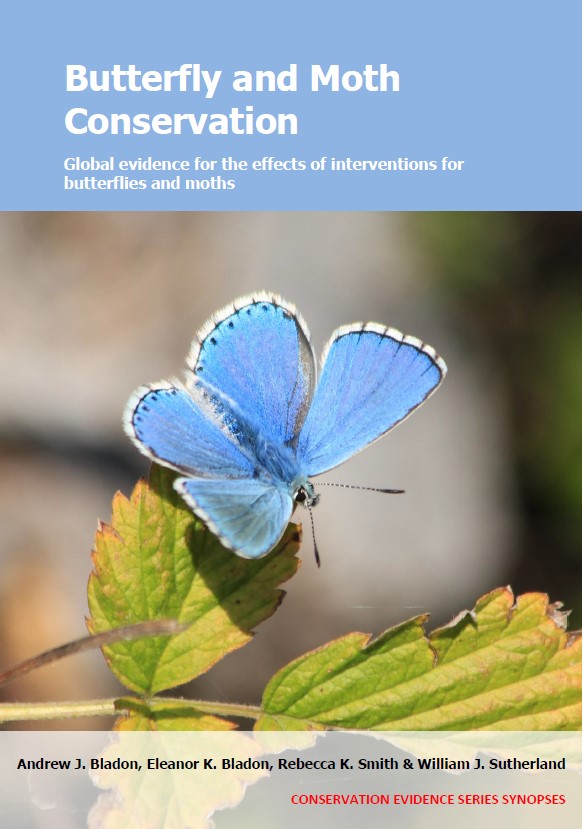Leave some areas unburned during prescribed burning
-
Overall effectiveness category Awaiting assessment
-
Number of studies: 2
View assessment score
Hide assessment score
How is the evidence assessed?
-
Effectiveness
not assessed -
Certainty
not assessed -
Harms
not assessed
Study locations
Supporting evidence from individual studies
A replicated study in 1993–1997 in two oak savanna and prairie sites in Indiana, USA (Kwilosz & Knutson 1999) reported that Karner blue butterfly Lycaeides melissa samuelis populations increased where unburned patches were left during prescribed burning, and Karner blues were recorded within the unburned patches. Results were not tested for statistical significance. Over 2–3 years, at two sites managed by rotational burning with unburned patches left within the burn area, the maximum number of Karner blue adults recorded increased from 159–288 to 296–725. Karner blues were recorded in nine of 11 unburned patches within burned units during the first brood after burning, and in all 11 patches during the second brood. Within a 6,000-ha reserve, two sites were each divided into four units. At a 177-ha site, one unit was burned annually in autumn or spring from 1993–1996, and adjacent units were not burned in consecutive years. At a 59-ha site, one unit/year was burned in autumn 1995–1996. Within the burned units, multiple 50–300-m2 patches with high Karner blue and wild lupine Lupinus perennis densities were left unburned. Butterflies were surveyed along a fixed 1.5–6.5-km transect/site, passing through all units and 11 unburned patches. The highest number recorded at each site was taken as an annual population estimate. In July 1994, two surveys were conducted at the larger site. In June–August 1995–1997, six–nine surveys/year were conducted 1–10 days apart at each site.
Study and other actions testedA replicated, site comparison study in 1991–2005 in seven pine barrens and four prairies in Wisconsin, USA (Swengel & Swengel 2007) found that six out of nine specialist butterfly species were more abundant at sites with unburned areas than at sites without unburned areas. At one pine barren, Karner blue Lycaeides melissa samuelis and mottled duskywing Erynnis martialis abundance in the unburned refuge were higher 10–17 years after establishment (Karner blue: 10.2–17.3 individuals) than 3–9 years after establishment (2.4–14.9 individuals), while abundance in 10 burned areas remained similar (10–17 years after: 7.1–14.6; 3–9 years after: 4.7–9.2 individuals; data for mottled duskywing not presented). In addition, when the unburned refuge was older, relative abundances of gorgone checkerspot Chlosyne gorgone (47% of records in refuge) and dusted skipper Atrytonopsis hianna (49% of records) were higher than in 10 burned areas, compared to when the unburned refuge was younger (checkerspot: 9%, skipper: 19% of records in refuge). There was no significant difference in relative abundances between the refuge and burned areas for Olympia marble Euchloe olympia (older: 12%; younger: 4% of records in refuge) and Persius duskywing Erynnis persius (older: 13%; younger: 0% of records in refuge). At another pine barren, over 13 years, frosted elfin Callophrys irus abundance in the refuge increased, but was absent from a site after burning, and abundance decreased at 11 comparison sites (see paper for details). In two prairies, regal fritillary Speyeria idalia abundance in unburned refuges (15.9–53.5 individuals) was higher than in burned areas (2.7–11.1 individuals). At the prairie with the most recently established refuge, regal fritillary abundance began to increase once the refuge was 7-years-old. However, Ottoe skipper Hesperia ottoe abundance declined at two prairies managed with burning and unburned refuges (data presented as model result). Seven pine barrens (8–48,921 ha) and four prairies (25–4,766 ha) were managed with cool-season rotational burning, mowing, grazing and hand-cutting of woody vegetation, within which areas were unburned for up to eight years. Two barrens contained an unburned refuge (4–14 ha) last burned in 1988 and 2002. Three prairies had long-established unburned refuges (11–35 ha), while the 3-ha refuge at the fourth prairie was last burned in 1991. From May–August 1991–2005, butterflies were surveyed along transects at each site, but sites were not surveyed every year.
Study and other actions tested
Where has this evidence come from?
List of journals searched by synopsis
All the journals searched for all synopses
This Action forms part of the Action Synopsis:
Butterfly and Moth Conservation
Butterfly and Moth Conservation - Published 2023
Butterfly and Moth Synopsis





)_2023.JPG)














